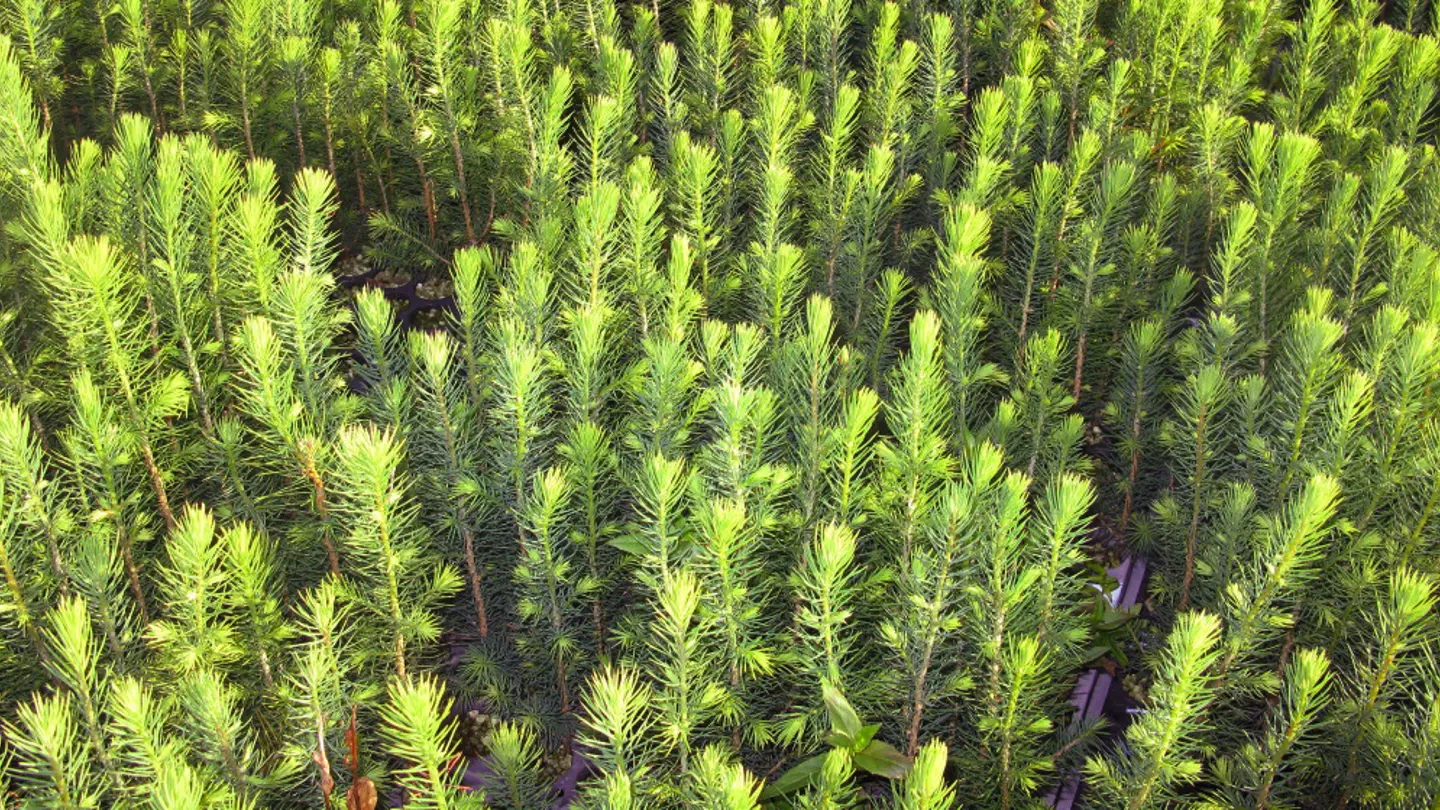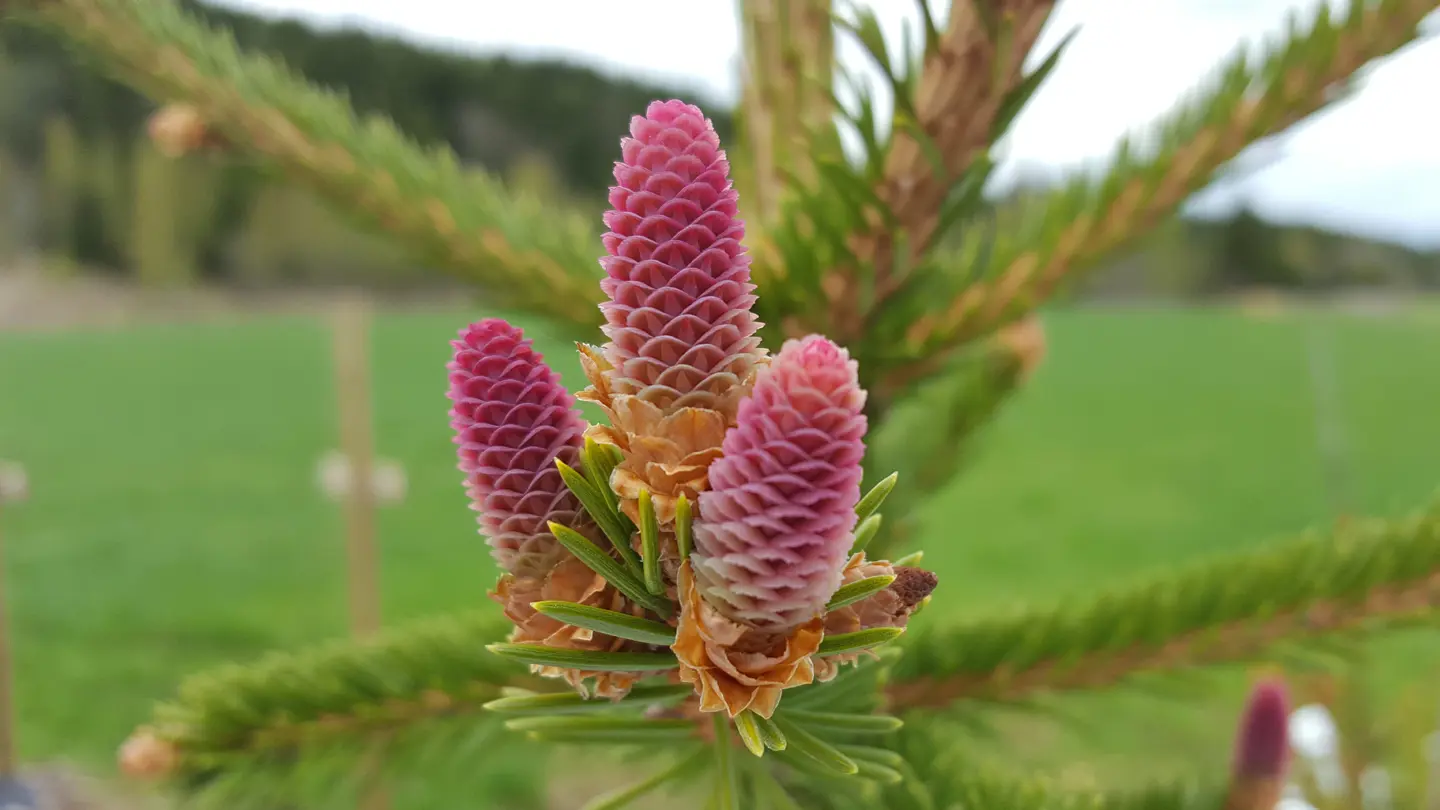
Traceability of genetic origin across the Nordic forests – why and what to track?
- Hem
- Vårt arbete
- Skog
- Artikelserie: Genetiska aspekter på användande
- Traceability of genetic origin across the Nordic forests – why and what to track?
In all the Nordic countries there are official protocols in place to make sure that when a forest owner buys seed or plants for their forest, the material is accompanied with information on its origin and means of production. There are also “planters guides” on choice of reproductive material. However, once the seed has been sown or the plant carefully planted, what will happen to this precious information – and why would it be very important to keep track of?
Text by Mari Rusanen (Luke), Mari Mette Tollefsrud (NIBIO), Gunnar Friis Proschowsky (Naturstyrelsen), Johan Kroon (Skogforsk), Kjersti Bakkebø Fjellstad (NordGen Forest). Top photo: John Y. Larsson/NIBIO.
Imagine there would be a tool for recording the forest reproductive material (FRM) and genetic origin for long term, decades or even hundreds of years. If the planting is successful the whole chain has been carefully executed, starting from the choice of reproductive material. The information about the planted material is precious and should be kept. It may even have economical value in the future.
If something goes wrong in a planted forest, be it two or twenty years old, it may not be easy to find the exact reasons. In fact, the failure may be a result of various biological factors, just bad luck or sometimes wrong decisions. Unsuitable reproductive material or a misplaced origin may typically be listed as one of the reasons for failure. However, the true effect of the used reproductive material is impossible to validate if the origin is not even known. Evaluating it would benefit both the forest owner and forestry sector in general.
Permanent records through time
Having well organized and accessible permanent records of origin would make it possible to realistically estimate the effect of the genetic material, both when a failure or success happens. In individual cases this would benefit the forest owner and give guidance for future actions. It would also allow for analyses and comparisons in wider geographical scale. Without a doubt, administration and extension services for forestry would greatly benefit from trustable information in an accessible format. The record would also enable landscape level monitoring, following the use of certain FRM (e.g. clonal mixtures) in a region and assessing a possible impact on genetic diversity.

Although this type of big data can’t substitute for carefully designed provenance or progeny trials in breeding, most certainly also researchers and breeders would greatly benefit from long term geo-referenced records and information at stand level in the forest. Research collaboration in Europe and especially collaboration across the Nordic region produces knowledge about how seeds and plants are adapted to the climate and how far the materials can be moved. At the same time, it is known that research fails to capture all conditions. By using the so-called Breeding without breeding strategy, there may also be potential in using large stands with known genetic material, to look for and efficiently introduce new traits in the breeding cycles, be it resistance towards pathogens, drought tolerance or other.
Data privacy – the need for a voluntary set-up
However, before setting up permanent records on the use of reproductive material we need careful consideration of several policy-related aspect such as data privacy and forest ownership. General understanding at the moment is that such a system couldn’t be enforced legally on forest owners, at least not in all Nordic countries, but should be based on voluntary participation. In the changing climate it would make sense to build up such an information system at European level, but at least in Finland and in Sweden it would be difficult to consider the EU keeping records of the use of forest, which is clearly in member states competence. Furthermore, the Nordic countries have well established cooperation in forest tree breeding and provenance research, but not all the countries are members of the EU. Therefore, such a system would be better handled at national level and in order to keep the cost acceptable, linking it to the existing forest information systems, where possible.

In Sweden there are different levels of recording systems both at the national authority (Skogsstyrelsen) and in the private sector. “Återbeskogningsblankett” (“Reforestation form”) at harvesting is obligatory but does not specifically request information of FRM. “My pages” at the Swedish Forest Agency could also be used to enter FRM information by forest owners. In Norway the forest owner is responsible for keeping the documentation on what is planted in the forest. A digital solution with Norwegian financial system “Skogfond” offers already an opportunity to report the reference number of the forest reproductive materials used along with their geographical coordinates, but it is not obligatory. In Finland the forest act orders to use suitable origin, but there is no requirement for the forest owner to keep the information after the obligation for sufficient regeneration is fulfilled. Denmark, on the other hand, seems not to have any existing information systems where use of reproductive material could be added. In many Nordic countries most forest companies and forest owner associations have systems to track the use of reproductive material, but they are not always systematically used and are for internal use only.
The way forward
For the aim of knowledge-based regeneration, for continued research and for improved long-term records of viability and growth, the benefits of keeping georeferenced records of genetic origin of forest reproductive material are obvious and recognised by forest owners, their organisations and managers. However, before concrete actions for systematic documentation can be taken, a careful analysis of the legal framework and stakeholder views is needed. Even in a model based on national records, there may be room for and common interest in coordinating and sharing the information contents and formats at wider level, for instance at Nordic level or even Europe-wide.
Anyway, the main message is; keep track of the forest for better planning ahead!
FACTS
- This article addresses Recommendation 21 in the EUFORGEN report “Genetic aspects linked to production and use of forest reproductive material (FRM)“.
- EUFORGEN (European Forest Genetic Resources Programme), the European cooperation on conservation and sustainable use of forest genetic resources, has released an in-depth report on different genetic aspects which one should be aware of linked to production and use of FRM.
- NordGen Forest and partners highlight some of the recommendations in the EUFORGEN report and how these relate to Nordic strategies.